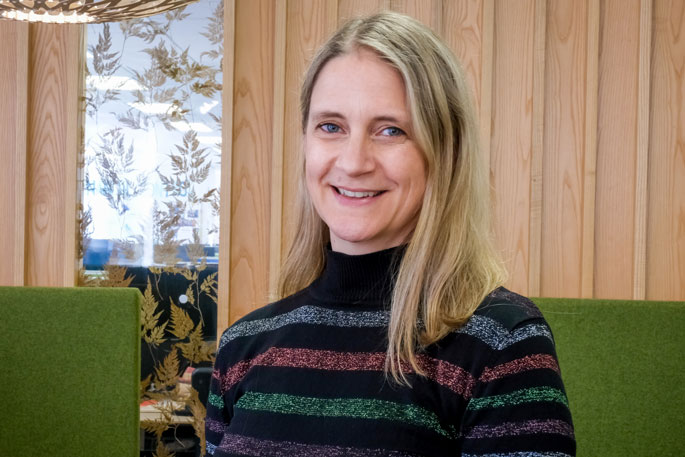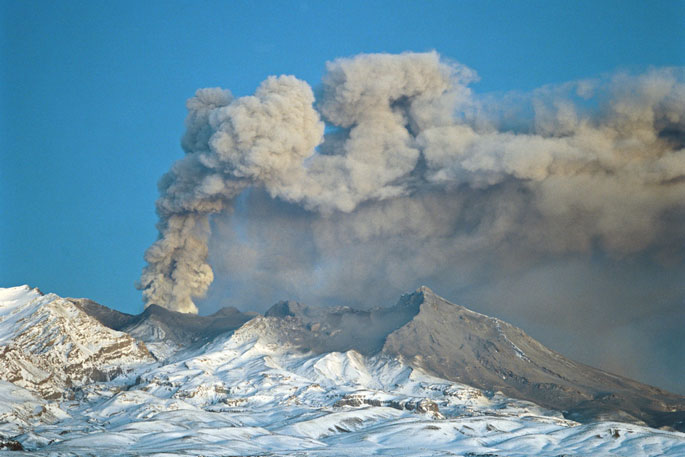Recent rumbles beneath Mt Ruapehu are a gentle reminder of the power of volcanoes and the importance of science, preparedness, and education, writes EQC Chief Resilience and Research Officer Dr Jo Horrocks.
Read what she has to day below:
Volcanoes never fail to surprise me, even after years working in and around them in New Zealand and overseas.
Although New Zealand has not experienced a damage-causing eruption like that seen in La Palma, Spain, last year, or recent lava flows from Kilauea volcano in Hawaii, we know it can and will happen here.
The elevated volcanic unrest we are currently witnessing at Ruapehu reminds us why we need to understand our risk to the greatest possible extent, and plan and build capability and capacity for responding to such events.
New Zealand is at the forefront of volcanic resilience and recently my EQC colleague Annah Chisholm and myself were invited to explain EQC's volcanic risk management and insurance scheme to an international audience in the Spanish specialist media outlet Consor Seguros Digital.
Reflecting on the La Palma eruption, we feel that we are in a good position in Aotearoa thanks to our volcano science, risk assessment, planning, preparedness, and education. We have also had frequent small-scale reminders of the power of volcanoes over recent decades, which has ensured researchers, organisations, and communities have stayed engaged in such matters.
Our investment in science has helped us understand our natural environment, the ground beneath us, and the natural processes that can affect us. Plus, we continue to learn from others; all of which puts us in the best possible position to anticipate and manage any volcanic crises that come our way.
This week's rumbles are not the first time Mt Ruapehu has provided a wake-up call to New Zealand.
The eruption of Ruapehu in 1995-96 was a huge reminder about what could happen, and it initiated a wave of research, planning, and preparedness by a range of agencies.
Sadly, New Zealanders have also seen how tragic volcanic activity can be after the devastating eruption of Whakaari/White Island in 2019.
 Dr Jo Horrocks.
Dr Jo Horrocks.
EQC invests over $20 million each year in natural hazard research and education to help communities understand and manage their risks.
It also provides natural disaster insurance cover for damage to residential properties caused by earthquakes, volcanic eruptions, hydrothermal activity, tsunamis, and landslides, as well as damage to land from storms and floods.
Natural hazards are well known to us, especially earthquakes, and we've learnt some big insurance lessons over the years. Much of what we've learnt is transferable and can be applied to other natural hazards.
New Zealand is the envy of most other countries with active volcanoes because of our very high insurance coverage for volcanic impacts.
Yet it is because of our investment in science and research, as well as the continuous geohazards monitoring system we have in GeoNet that really matters; this is what aids the nation to be prepared.
It means we have a robust evidence base on which to inform our natural hazard risk management policy and practice. We also have an authoritative voice in international markets, particularly in the international reinsurance market. New Zealand volcanologists are sought out world-wide for their expertise and capabilities.
Going forward, EQC's focus is on the development of a national probabilistic volcanic hazard risk model – a model that tells us the chance of being impacted by any particular volcanic hazard, in any particular location, over a specified period of time.
While New Zealand has had a hazard model for earthquakes for many years, modelling for other hazards, including volcanic hazard, is not as well advanced. A national probabilistic model would be a game changer, and a first worldwide.
Our next step is to see that work on this continues and remains a priority.



0 comments
Leave a Comment
You must be logged in to make a comment.